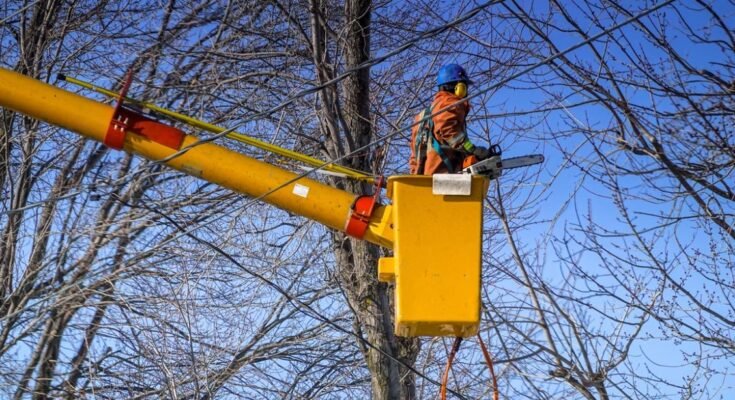Key Signals that Suggest Tree Removal is Essential
Having trees in your yard can provide beauty and shade, but there are times when tree removal lower plenty becomes necessary. Whether due to safety concerns, disease, or other factors, recognising the signs that a tree needs removal is essential.
In this blog post, we will discuss seven common signs indicating that a tree should be removed from your property.
Dead or Diseased Tree
A dead or diseased tree is a clear indication that removal is necessary. If a significant portion of the tree is dead or shows extensive signs of disease, such as fungus growth or large cracks, it may pose a safety risk to people and property. Dead or diseased trees are more susceptible to falling, especially during storms or high winds, making removal a priority to prevent accidents.
Leaning or Unstable Tree
A tree that is leaning significantly or appears unstable should be carefully assessed for removal. Leaning can indicate root damage or structural issues, which compromise the tree's stability. If the angle of the lean is severe and poses a risk of falling onto structures, power lines, or people, removal may be necessary. Consulting with a tree professional can help determine the best course of action.
Excessive Branch Loss or Damage
If a tree has experienced extensive branch loss or damage, it might be an indication of underlying issues that make removal necessary. Branch loss can be caused by severe storms, disease, pest infestation, or other factors. If the tree's canopy is significantly affected, it may struggle to recover and regain its health. In such cases, removal might be the best option to prevent further damage or hazards.

Significant Structural Issues
Trees with significant structural issues, such as large cavities, hollow trunks, or large cracks, should be evaluated for removal. As, tree removal Richmond is often necessary when these issues weaken the tree's structure and increase the risk of collapse. Structural problems may not always be apparent, so it's essential to have a professional arborist assess the tree and determine the best course of action.
Invasive Root System
Trees with invasive root systems can cause substantial damage to structures, sidewalks, and utilities. If a tree's roots are encroaching on your home's foundation, lifting pavement, or causing blockages in pipes, it may be necessary to remove the tree to prevent further damage. Consulting with a professional can help determine if other options, such as root pruning, are viable alternatives.
Diseased or Infested Trees Near Healthy Trees
When one tree in close proximity to other healthy trees shows signs of disease or infestation, removal may be necessary to prevent the spread of the issue. Some diseases or pests can quickly spread from tree to tree, jeopardizing the health of your entire landscape. Removing the infected tree promptly can help protect other trees and prevent future problems.
Obstruction or Safety Concerns
Trees that obstruct views, block access pathways, or interfere with utility lines may need to be removed for safety and practicality reasons. Vision obstruction can be a hazard, particularly near roadways or driveways. Additionally, trees growing close to power lines can pose a severe risk of electrical fires or outages. In such cases, tree removalists melbourne may be required to maintain safety and prevent potential accidents.
Conclusion
Recognising the signs that a tree needs removal is crucial to maintaining a safe and aesthetically pleasing landscape. Dead or diseased trees, leaning or unstable trees, excessive branch loss, significant structural issues, invasive root systems, diseased or infested trees near healthy trees, and obstruction or safety concerns are all indications that removal may be necessary. If you notice any of these signs on your property, consult with a qualified tree removal Richmond, professional to assess the situation and determine the best course of action.
Remember, prioritising safety and addressing tree removal needs promptly can help protect your property and ensure a healthy environment.

Comments
Post a Comment